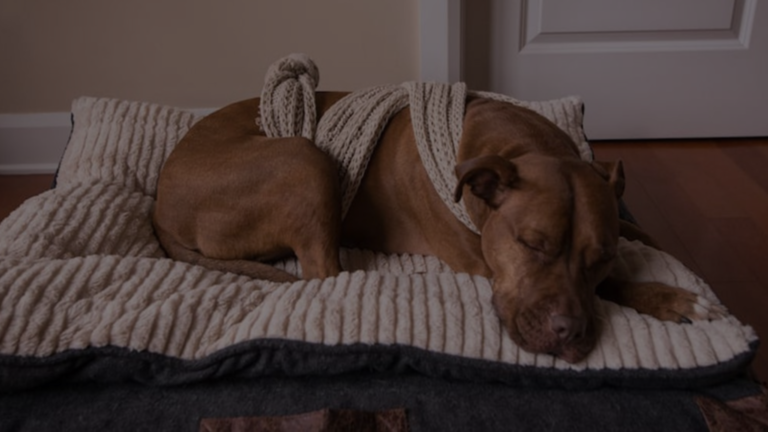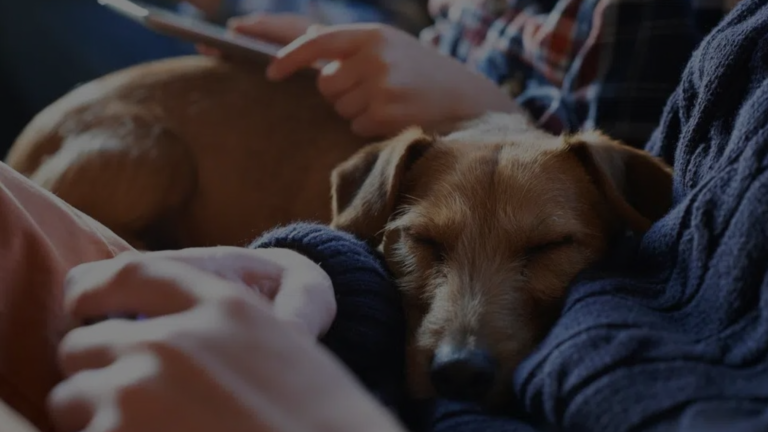The sight of a beloved dog twitching paws, whimpering softly, or even seemingly walking in their sleep can be unsettling. While sleepwalking (somnambulism) is a well-documented phenomenon in humans, the question of whether dogs experience it remains shrouded in mystery. Can dog sleepwalk? Let’s delve into the fascinating realm of canine sleep and explore the possibility of sleepwalking with our four-legged companions.
Understanding Canine Sleep
Before we dive into sleepwalking, it’s crucial to grasp the fundamentals of how dogs slumber. Just like us, dogs cycle through various sleep stages, including:
- Non-rapid eye movement (NREM) sleep: This deep, restorative phase comprises around 80% of a dog’s sleep time. During NREM, brain activity slows, muscles relax, and dreams may occur.
- Rapid eye movement (REM) sleep: Characterized by rapid eye movements and intense brain activity, REM sleep constitutes approximately 20% of a dog’s sleep duration. This is when vivid dreams are most likely to unfold.
Exploring the Possibility of Sleepwalking in Dogs
While anecdotal reports of dog sleepwalking exist, scientific evidence currently suggests that dogs cannot truly sleepwalk in the same way as humans. Unlike humans, who may exhibit complex behaviors like walking, eating, or even driving while asleep, dogs exhibiting sleep-like movements typically remain in a partial state of consciousness. Here’s why:
- Brain Wave Patterns: Sleepwalking in humans is associated with specific brain wave patterns that haven’t been observed in dogs exhibiting seemingly sleepwalking behavior.
- Limited Consciousness: During sleepwalking, humans enter a state of partial dissociation, losing awareness of their surroundings. However, dogs displaying sleep-like movements often respond to external stimuli, indicating they’re not fully asleep.
- Misinterpretation of NREM Behaviors: Twitches, whimpers, and slight movements during NREM sleep are common in dogs and don’t necessarily translate to sleepwalking.

Alternative Explanations for Sleep-Like Behaviors in Dogs
If your dog appears to be sleepwalking, several alternative explanations are more likely:
- Sleep Disorders: Conditions like canine narcolepsy or REM sleep behavior disorder can mimic sleepwalking, causing dogs to act out dreams while partially asleep.
- Neurological Issues: Head injuries, tumors, or other neurological problems can manifest in unusual sleep behaviors.
- Nightmares: Like humans, dogs can experience nightmares, leading to vocalizations, movements, and signs of distress during sleep.
- Pain or Discomfort: Underlying medical issues causing pain or discomfort can manifest during sleep as restless movements or whimpering.
- Anxiety or Stress: Environmental or situational factors inducing anxiety or stress in your dog might affect their sleep, leading to restlessness or unusual behaviors.

What to Do If You Think Your Dog Is Sleepwalking
If you witness your dog exhibiting sleep-like behaviors, here’s what you should do:
- Observe and Document: Carefully observe the behavior, taking note of its frequency, duration, and any specific movements or vocalizations. Keeping a record can help your veterinarian diagnose the cause.
- Avoid Disruption: While it might be tempting to wake your dog, it’s best to let them complete their sleep cycle to avoid startling them.
- Schedule a Veterinary Checkup: Consult your veterinarian for a thorough examination to rule out any underlying medical conditions.
- Provide a Safe Sleep Environment: Ensure your dog has a comfortable, quiet, and secure sleeping area away from hazards.
- Manage Stress and Anxiety: If stress or anxiety seems to be contributing factors, address their root cause and explore calming techniques like providing enrichment activities or pheromone diffusers.
Remember: Early diagnosis and intervention are crucial for addressing any underlying medical or behavioral issues that might be affecting your dog’s sleep.
Disclaimer: This article is for informational purposes only and should not be construed as veterinary advice. Always consult with a qualified veterinarian for any concerns about your dog’s health or behavior.
Additional Resources
FAQs About Dogs and Sleepwalking
Can dogs sleepwalk?
While dogs experience sleep phases and may twitch or even run in their sleep, true sleepwalking, where they walk or engage in complex activities unconscious, is extremely unlikely.
What might look like sleepwalking in dogs?
Several other conditions can mimic sleepwalking in dogs, including:
- Night terrors: These involve intense fear and vocalizations but rarely involve walking.
- Idiopathic epilepsy: Seizures can resemble sleepwalking, especially partial seizures affecting movement.
- Vestibular disease: Balance issues can cause stumbling or disorientation, sometimes mistaken for sleepwalking.
- Cognitive dysfunction syndrome (CDS): This age-related condition can cause confusion and aimless wandering, resembling sleepwalking.
Should I be worried if my dog seems to be sleepwalking?
Yes, consult your veterinarian if you observe behavior resembling sleepwalking. It’s crucial to rule out underlying medical conditions that require treatment.
What should I do if I catch my dog “sleepwalking”?
Avoid startling them awake. Gently guide them back to their bed calmly and quietly. Observe them for any other unusual behavior and document the incident for your veterinarian.
Are certain breeds more prone to sleepwalking-like behavior?
There’s no evidence linking specific breeds to sleepwalking. However, any dog experiencing underlying medical conditions that affect sleep or neurological function might exhibit similar behaviors.
How can I prevent my dog from “sleepwalking”?
Since true sleepwalking in dogs is unlikely, prevention isn’t relevant. However, ensuring a healthy sleep routine, minimizing stress, and addressing any underlying medical issues can contribute to your dog’s overall well-being and sleep quality.







